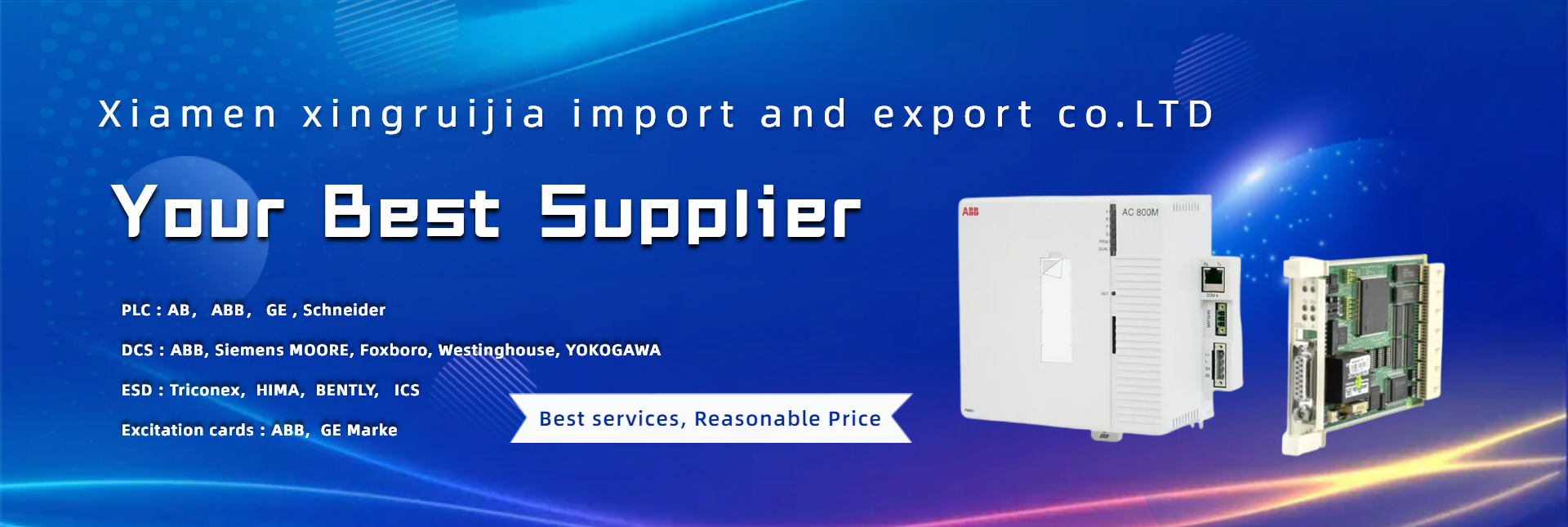Since American Otis Elevator Company launched the world’s first motor-driven elevator in 1889, the elevator has gone through the process of drum drive and traction drive in driving mode, and gradually formed two different driving modes of DC motor drive and AC motor drive. Nowadays, elevators have become an indispensable means of transportation for people to get in and out of high-rise buildings; Moreover, as a manned tool, people put forward higher requirements for it in terms of a series of static and dynamic performance, such as smoothness, high-speed, accuracy and efficiency. Since the early elevator relay control mode has the disadvantages of high failure rate, poor reliability, complex wiring, and difficult to change once receiving, it is necessary to develop a safe and efficient control mode. The programmable controller (PLC) not only retains the high quality performance of the relay control system, such as easy to understand, high control accuracy, good reliability, the control program can be changed with the process, easy to interface with the computer, convenient maintenance and so on. Therefore, PLC has been widely and deeply applied in the field of elevator control. 1、 The elevator control system consists of two main parts: electric drive system and electric control system. The electric drive system mainly includes the main drive circuit in the vertical direction of the elevator and the car switch circuit. Both of them use the DC motor which is easy to control as the driving power source. The main drive circuit adopts PWM debugging mode to achieve the purpose of stepless speed regulation. The motor on the door opening and closing circuit only needs one speed to move. The electrical control system is composed of many call buttons, sensors, control relays, indicator lights, LED seven-segment nixie tubes and the core device (PLC) of the control part. PLC integrates signal acquisition, signal output and logic control, and realizes all functions of elevator control together with elevator electric drive system. The elevator control system on the tenth floor forms a working cycle from call to response. The elevator working process can be divided into three working states: self-check, normal operation and forced operation. The elevator switches back and forth between the three working states, forming a complete elevator working process. (1) The three working states of the elevator 1. The self-inspection state of the elevator downloads the program to the MicroLogix1000 PLC of AB company and then powers up. The program in the PLC has started to run, but because the elevator has not read any data, it cannot respond through the program solidified in the PLC after receiving the request signal. In order to meet the condition that the elevator is ready to respond to the call, the elevator must be in the leveling state, the known floor, and the elevator door must be closed. The goal of the elevator self-inspection process is to press the start button first, and then press the resume normal operation button. The elevator door is closed first, and then the elevator automatically runs upward, and stops after two leveling points. 2. The steps for the elevator to complete a call response in the normal working state of the elevator are as follows: (1) After detecting the call signal of the lobby or car, the elevator compares the floor signal with the floor signal of the car, and selects the direction of operation through the direction selection module. (2) The elevator drives the DC motor to drag the car to move by dragging the speed control module. The car motion speed should be changed from low speed to medium speed and then to high speed, and then run at high speed to the deceleration point. (3) When the elevator detects the deceleration point signal generated by the detection point of the target floor, the elevator enters the deceleration state, changes from medium speed to low speed, and stops at the leveling point at low speed. (4) After leveling, open the door after a certain delay until it touches the travel switch in place; After a certain delay, close the door until the travel switch for closing the door in place is reached. The elevator control system always displays the floor of the car in real time. 3. When the initial position of the elevator needs to be adjusted or the elevator needs to be repaired, a state should be set so that the elevator does not respond to normal calls when it is in this state and can move to any position between the upper and lower limit points of the guide rail. After the fire/maintenance button on the console is pressed, the elevator will immediately stop the original operation, and then press the forced up (down) button, the elevator will go up (down); Once the button is released, the elevator will stop immediately. When the processing is completed, the normal operation button can be used to make the elevator jump out of the forced operation state. (2) Principle block diagram of elevator control system Principle block diagram of elevator control system is shown in Figure 1, which is mainly composed of command circuit in the car, hall call circuit, main drag motor circuit, door opening and closing circuit, level display circuit, button memory lamp circuit, floor detection and level detection sensor and PLC circuit.
Hardware composition of elevator control system
The hardware structure of the elevator control system is shown in Figure 2. It includes button code input circuit, floor sensor detection circuit, LED memory lamp circuit, PWM control DC motor wireless speed regulation circuit, car switch circuit, floor display circuit and some other auxiliary circuits. In order to reduce the number of PLC input and output points, the coding method is adopted to input the five-digit binary code of 31 call and layer indicating buttons into the PLC. 1. System input part The system input part is divided into two parts. The first part is the switch signal part that is directly input to the PLC input port, including the start button on the console, the return to normal operation button, the fire/maintenance button, the forced up (down) button part and the door opening and closing travel in place switch. The second is the button coding input signal part. This system is a ten-storey elevator system. There are as many as 28 floor selection buttons in the car and up and down call buttons beside the lobby. The 31 button signals are coded into five-digit binary code by priority coding method. Here, four 8-bit priority encoders 4532 and five 42 inputs or gates 4072 are used to form a 32-level priority encoder. 2. System output part The output part of the system includes LED memory lamp circuit, PWM control speed regulation circuit, car door opening and closing circuit, and seven-segment nixie tube floor display circuit. In the PWM control DC motor wireless speed regulation circuit, the PWM generation circuit receives the 8-bit binary code from the PLC. With the change of the code value, its output pulse duty cycle also changes accordingly. The car door opening and closing circuit uses two relays, two travel switches, DC motor, power inverter 2003, etc. to form a control circuit. In the seven-segment digital tube floor display circuit, the seven-segment digital tube is not driven by a special drive chip, but is directly input by a specific binary code provided by the PLC. 2、 Software design of the system (I) Software flow software flow diagram is shown in Figure 3 and Figure 4.
Modular programming This system is a centralized control system with complex control and is suitable for modular programming. First of all, we should classify the attributes of each output signal, and the connection between modules can use the intermediate register bit to transfer information. For example, the hall call circuit and the floor indicating circuit in the car are required to read the button call signal and keep it until the call is completed. The hall call button, floor indicator button inside the box, door opening and closing button inside the box, alarm button, etc. are coded into the PLC through the 32-level priority coding circuit, and the reading button coding circuit module is formed on the software. The system software is roughly divided into eight modules: the reading button coding circuit module, the floor detection circuit module, the control seven-segment digital tube display floor circuit module, the elevator direction selection circuit module and the system’s abnormal working state and the motor speed regulation drag circuit module, the deceleration point signal generation circuit module, the elevator car door opening and closing circuit module and the button memory lamp display circuit module. The floor detection circuit module mainly reads the floor code and stores the memory signal in the corresponding middle register until the floor changes. The control seven-segment nixie tube display floor circuit module mainly controls the display of two seven-segment nixie tubes. The elevator direction selection module is mainly used to determine whether the elevator is running up or down when responding to the call. The module has two intermediate outputs that are particularly important to the system, namely the uplink intermediate register bit and the downlink intermediate register bit. The normal working state of the system and the motor speed regulating and dragging circuit module combines the system initialization process, the forced working process and the motor speed regulating and dragging process into one module. The deceleration point signal generation circuit module completes the task of informing the system of the deceleration point signal. The elevator will enter the deceleration state when it reaches the detection point of the target floor, and the elevator will encounter a lot of floor detection points during the operation process. Only when it reaches the detection point of the target floor will it send a deceleration notice. When the elevator passes the detection point of the target floor, it will start to decelerate when it receives this signal. The elevator car door opening and closing circuit module and the button memory lamp display circuit module are the LED circuits that are used to control the car door closing and memory display after the button is received. (3) The system debugging elevator system is a teaching experimental device simulating the practical passenger elevator system. It can realize most of the functions of the actual passenger elevator system, including the hall call function, the floor selection function in the car, the clockwise elevator interception function, the intelligent call holding function, the elevator automatic door opening and closing function, the elevator manual door opening and closing function, the clearing invalid command function, the intelligent initialization function, the elimination/maintenance function, the floor display function and the elevator smooth speed change function. Although the elevator control system has been able to meet the basic elevator operation requirements, there are still many areas to be improved: 1. The interface for communication with the computer is added to realize networking control, and the integrated control of multiple elevators is completed by the computer. 2. Optimize the direction selection function of the elevator, so that it can change with the change of passenger flow, and achieve the purpose of efficient passenger transportation. 3. Add elevator handling methods in case of emergency. 4. You need to enter the password to take the elevator to reach the special level function, and do not respond to other floor calls when responding to the floor call. 5. Set capacitance sensing device. If there are still passengers in and out when closing the door, the car door can automatically reopen without touching the human body.
Post time: Feb-08-2023


